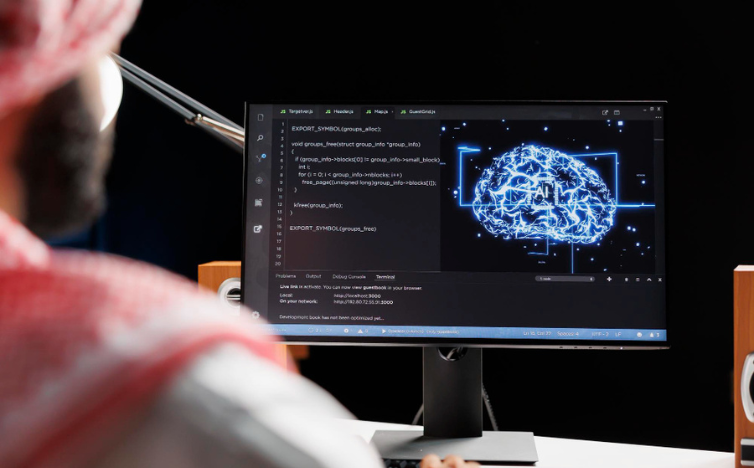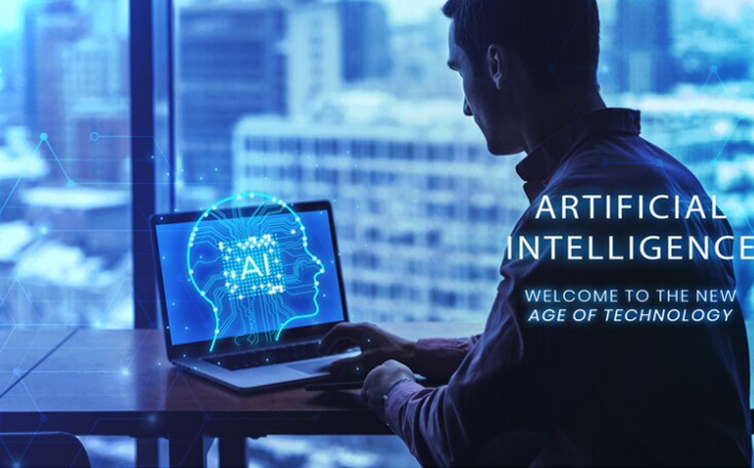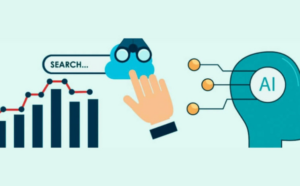Imagine having a machine that can organize your cupboard just the way you like it or make a personalized cup of coffee for each person in your house. These amazing abilities are possible because of artificial intelligence, often called AI. AI gives machines the ability to think and act like humans by using complex algorithms and math. But AI isn’t just in obvious things like robots; it’s also in smartphones, cars, social media, video games, banking, surveillance, and more. So, what does AI really do? Well, imagine a robot we created that can navigate a field despite changes in lighting, landscape, and size. This ability to handle new situations is called generalized learning. The robot also has to make decisions, like choosing a path or figuring out how to cross a stream using a plank. This is problem solving. In simple terms, AI makes machines smart by helping them adapt, reason, and find solutions.
Table of Contents
AI in our daily life
AI isn’t just for one type of job; it’s everywhere. In healthcare, it helps with medical tests and finding new medicines. In finance, it catches bad guys doing sneaky things and predicts what might happen in the stock market. In education, AI can make learning feel personalized, like a teacher just for you.
You’ve probably already seen AI in action in your everyday life. Things like voice assistants on your phone or streaming platforms suggesting shows you might like – that’s all AI. In business, AI is like a superhero, making operations smoother, helping with decisions, and finding useful information in data.
But, like anything cool, AI also has some challenges. People worry about whether it’s fair, if it might take away jobs, and if it can make mistakes. Figuring out how to use AI without causing problems is a big responsibility.
What are artificial intelligence’s benefits and drawbacks?
There are many benefits and Drawbacks of AI. Some are given below.
Types of AI
There are two types of AI.
Weak AI vs Strong AI
Weak AI
Weak AI is like a system that is made to do just one job really well. It includes things like video games.For example, AlphaGo is great at playing the game Go, but it’s not good at other games like chess. Alexa is an example too, as it can do various tasks but only if it’s programmed for them. If you ask Alexa something it doesn’t know, like the traffic status from work to home, it won’t be able to help.
Strong AI
Strong artificial intelligence systems are like machines that can do tasks similar to what humans do. They are more advanced and complicated. These systems are designed to figure things out on their own without needing a person to help. You can find them in things like self-driving cars or in operating rooms at hospitals. Another example is Ultron from Avengers, who is self-aware and even has emotions, making its responses unpredictable.
Machine Learning vs Deep Learning
Machine Learning
Machine learning is like teaching machines to learn from examples and get better at tasks over time. Instead of telling the machine exactly what to do, we provide it with data and let it figure things out on its own. For example, it helps in suggesting movies or products based on what you’ve liked before.
Deep Learning
Deep learning is a special kind of learning where machines try to understand things in a way similar to how our brains work. It uses neural networks with many layers to automatically learn and recognize complex patterns in data. This is handy for tasks like recognizing objects in pictures or understanding speech. It’s like giving machines the ability to learn and make smart decisions on their own.
What are the 4 types of artificial intelligence?
Four categories exist for artificial intelligence:
- Reactive Machines:
These AI systems follow fixed rules and can respond to specific situations, but they don’t learn from experience or handle new things well.
- Limited Memory:
These AI systems can use past experiences to make decisions, but they’re not great at adapting to completely new situations.
- Theory of Mind:
This is like an AI that understands human emotions and thoughts, but we’re not there yet. Current AI doesn’t really “get” human feelings.
- Self-aware AI:
Right now, it’s just a big idea that AI could have its own thoughts and identity, similar to humans. But, in reality, this is still more of a concept than something that has actually happened.
What are examples of AI technology and how is it used today?

AI is like a smart helper in our daily lives. It’s in virtual assistants, chatbots, and even when Netflix suggests what to watch. In healthcare, it helps with cancer diagnosis, and in finance, it stops fraud. Self-driving cars use AI to drive safely, and even in games and smart home devices, AI makes things work better. Basically, AI is all about machines making our lives easier and more interesting.
What are the applications of AI?
Artificial intelligence has found its place in numerous markets. Here are examples.
AI in Education:
In schools, AI makes learning better by understanding how students learn and helping teachers teach in a way that fits each student.
Learn More: Best AI Tools For Education
AI in Healthcare:
AI helps doctors and nurses by using smart programs to analyze medical information. It can suggest treatments and discover new medicines, making healthcare better and more personalized.
AI in Banking:
In banks, AI helps with customer service and keeps an eye out for anything suspicious happening with our money, like fraud.
AI in Business:
In businesses, AI helps by looking at big sets of data, making customer service better with chatbots, and helping bosses make smart decisions.
Learn More: Best AI Tools For Business
AI in Finance:
In finance, AI helps keep our money safe by spotting frauds and predicting risks. It also helps with fast and smart trading on the stock market.
AI in Law:
In the legal world, AI helps lawyers by reading lots of legal documents quickly. It makes their work faster and helps them find important information.
Learn More: 8 Best AI Tools For Lawyers
AI in Entertainment and Media:
For fun and media, AI suggests shows to watch or music to listen to. It also helps create personalized ads that you might be interested in.
AI in Software Coding and IT Processes:
In making computer programs, AI helps write code and find mistakes. It makes the process smoother for the people creating software.
Learn More: 11 Best AI Tools for Coding
AI in Security:
AI protects us from online threats by finding unusual patterns that might be bad. It helps keep our information and systems safe.
AI in Manufacturing:
In making things like cars or toys, AI helps by predicting when machines might break and ensuring that the products are high quality.
AI in Transportation:
For moving around, AI helps in self-driving cars, finding the best routes, and making sure vehicles are in good shape.
Augmented Intelligence vs. Artificial Intelligence
Augmented Intelligence (AI):
Augmented Intelligence is about making humans even smarter with the help of computers. Instead of replacing people, it’s about working together. The idea is that computers can help us make better decisions, understand things faster, and do tasks more efficiently. It’s like having a helpful sidekick that makes us better at what we do.
Artificial Intelligence (AI):
AI is like making computers smart to do things that normally need human thinking. It can learn, solve problems, understand language, and see things like humans do. There are two main types: one is for specific tasks, and the other is more general, trying to be as smart as a human in many things.
Ethical use of Artificial Intelligence

Using artificial intelligence (AI) in a good and fair way means treating everyone equally and being honest about how AI makes decisions. It’s important to keep people’s personal information private and make sure they agree to how it’s used. Those who create AI should be responsible for any problems it might cause in society. Safety and security are a must to avoid issues or misuse. Working together with different groups helps solve problems and share good ideas. People should be able to step in and make changes if AI decisions seem wrong. We also need to think about how AI affects everyone and the environment. Checking and improving AI regularly ensures it stays fair and helpful. Following these ideas helps make sure AI is used in a good and fair way for everyone.
What is the history of AI
AI has a long history, going back to ancient times when people dreamed of intelligent objects. In the 19th century, the idea of computers started, and by the 1950s, a significant meeting at Dartmouth College officially kicked off the field of AI. There were ups and downs, like a quieter period in the 1970s and 1980s when support dwindled. The late 1990s saw a comeback with more computer power and data. In the 2000s, we got cool things like Google’s search engine and Amazon’s suggestions. The 2010s brought voice assistants and self-driving cars. Now, in the 2024s, we have advanced AI that can create new things, even though it’s still learning.
This journey has seen big moments, like AI beating a chess champion in 1997 and the rise of powerful models like GPT-3 in the 2010s. It’s exciting, but we’re still figuring out how to make AI work even better and avoid some hiccups it might have.
Conclusion
As we learn more about Artificial Intelligence, it becomes clear that it’s not a passing trend but a lasting and impactful development in how we approach various aspects of our lives.. It’s a strong tool that can transform how we do things in various parts of life. Knowing about AI is important so that we can use it smartly, ensuring it benefits us without causing problems.
FAQS
What’s the purpose of having AI?
We need AI because it helps us do things faster, solve tricky problems, and make our lives easier by handling tasks and coming up with smart ideas.
What was the reason behind inventing AI?
The creation of AI was driven by the goal of developing intelligent machines capable of performing tasks, learning from experiences, and addressing complex problems to enhance efficiency and automation in various areas
What is the future of AI?
As technology advances, AI is expected to become more widespread, transforming industries such as healthcare, banking, and transportation.
How many objectives does AI have?
AI has one big goal: to make machines act like humans by understanding, thinking, solving problems, and even expressing emotions. It’s pretty amazing to imagine a machine that can feel and behave like we do.
Who is considered to be the founder of AI?
The father of artificial intelligence is American computer scientist John McCarthy. He came up with the term “artificial intelligence.”




